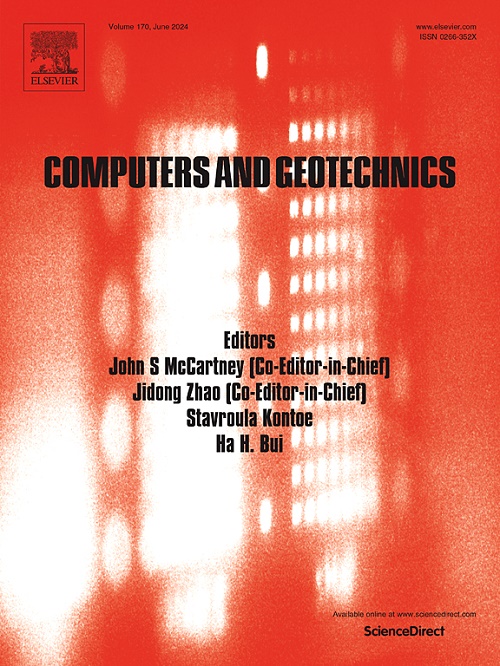Numerical study on the effect of intersection angle and loading magnitude on leakage-induced ground collapse
IF 5.3
1区 工程技术
Q1 COMPUTER SCIENCE, INTERDISCIPLINARY APPLICATIONS
引用次数: 0
Abstract
Ground collapse is one of the most common urban disasters, with pipeline leakage being a significant cause. Pipelines are regarded either parallel or perpendicular to the road, using a single variable to control the soil strength or the cavity shape, which over-simplified the development of soil cavities. In this paper, with a coupled method of element deactivation and strength reduction, a more realistic 3D finite element model was established to simulate the development of soil cavities caused by pipeline leakage. Effects of burial depths, intersection angles between loading areas and pipelines, and loading magnitudes on the process of road collapse were explored. The results showed that: (1) an increase in load could alter the collapse mode, with plastic zones appearing at the edges of the soil cavity, leading to a larger collapse impact range; (2) the orientation of the loading area significantly influenced the rate of surface subsidence post-collapse and the range of collapse impacts; (3) using the strength reduction method, a factor of collapse risk was defined to access the collapse risk under pipeline leakage. Based on the computational results, stability charts and collapse risk charts were proposed, providing a theoretical foundation for the prevention and control of urban traffic disasters.
求助全文
约1分钟内获得全文
求助全文
来源期刊

Computers and Geotechnics
地学-地球科学综合
CiteScore
9.10
自引率
15.10%
发文量
438
审稿时长
45 days
期刊介绍:
The use of computers is firmly established in geotechnical engineering and continues to grow rapidly in both engineering practice and academe. The development of advanced numerical techniques and constitutive modeling, in conjunction with rapid developments in computer hardware, enables problems to be tackled that were unthinkable even a few years ago. Computers and Geotechnics provides an up-to-date reference for engineers and researchers engaged in computer aided analysis and research in geotechnical engineering. The journal is intended for an expeditious dissemination of advanced computer applications across a broad range of geotechnical topics. Contributions on advances in numerical algorithms, computer implementation of new constitutive models and probabilistic methods are especially encouraged.
 求助内容:
求助内容: 应助结果提醒方式:
应助结果提醒方式:


